Changes that begin in the body from the very first days may be noticeable initially, or may not be noticed until certain moments. So, when nipples dry out during pregnancy, women note not only a feeling of discomfort, but are also at a loss as to why this is happening right now, what does it mean, is it dangerous?

Causes
When the nipples become sensitive in the early stages during pregnancy, this indicates that a natural hormonal change is occurring, which affects literally all systems in the woman’s body. Powerful hormonal production in the first stages is aimed primarily at preserving the fetus and providing the necessary amount of placental elements.
The hormone progesterone irritates the skin, causing either an increased amount of oil production or drying it out. However, apart from stretching and increasing sensitivity, the nipples do not change in any way until a certain point. Already at 6 months, a woman may notice other characteristic changes that appear suddenly.
Prolactin comes into play, which ensures not only swelling of the mammary glands, but also the formation of colostrum inside the alveoli. The formation of a thick fluid is also due to a number of changes in the mammary gland itself, which continues to grow and increase in size.
Colostrum has a creamy tint; when a drop of colostrum forms on the nipple, you can rub it over the skin, it will initially be a little sticky, but then the thick consistency will be absorbed without leaving a trace. Colostrum leaves greasy dark stains on fabric that are difficult to wash off.
Reasons why nipples appear dry during pregnancy:
- Excessive amounts of the hormones progesterone and prolactin. Such a formation is not dangerous, but can cause dry skin; the nipple of the breast, with a large number of nerve receptors, reacts especially sharply.
- Poor hygiene, using soap that dries out the skin. Frequent water procedures using soap (especially antiseptic and antibacterial), gels without moisturizing oils provoke drying of the surface layer of skin on the nipple.
- Irritating secretion from Montgomery's tubercles. The secretion, which is secreted during pregnancy not only from the nipples, but also from the tubercles, is located in the halo area and provides antibacterial protection and lubrication. It prevents the addition of bacteria and helps eliminate possible risks when swimming in open water. However, when the hormonal composition changes, which occurs around the 7th month, there may also be a change in the composition of the secretion, which now dries out the tip of the nipple.
- Allergy to irritating components, food, vitamins. In some situations, other than the nipple drying out, there are no manifestations indicating an allergy. Therefore, it is quite difficult to determine an allergic reaction.
Another common cause of excessive dryness of the nipple is the appearance of colostrum, which is initially released in small quantities and dries on the nipple, forming a film. Then, after some time, the woman will notice its discharge during the daytime, now it is enough to leave stains on the bra or underwear.
If a discharge of a greenish, transparent hue with reddish impurities is released from the nipples, this is a reason to consult a doctor. Such discharge during or without pregnancy is a dangerous pathological condition.
What to do
If, in addition to irritation and dry nipples, a woman is not bothered by other manifestations (pain, redness, red or green discharge), then all that can be done is to prevent the formation of cracks. Microcracks form in any case if the nipple constantly dries out. Therefore, to prevent painful treatment of a sore on the nipple, it is worth constant moisturizing.
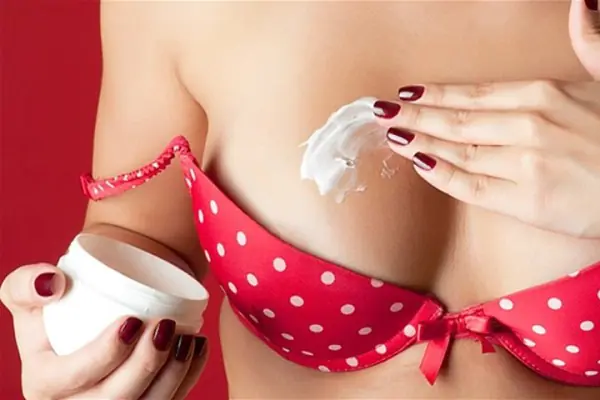
If the gynecologist doubts the diagnosis, additional diagnostics may be prescribed in the form of ultrasound of the mammary glands and tests. There is no need to worry about this. Most likely, the doctor is playing it safe in order to exclude possible complications in the future. After all, pregnancy in this case acts as a risk factor in which the release of hormones occurs constantly, which means the risk of the formation of cysts and fibroids increases.
Oncology during pregnancy is diagnosed quite rarely, in only 3%. However, in all cases, this is preceded by precursors: increased temperature, discharge, retraction of the nipple inward.
Recommendations
Important recommendations from a therapist, obstetrician and gynecologist in most cases concern proper nutrition, enriched with vitamins and microelements, as well as a proper lifestyle. Women who smoke before pregnancy or during pregnancy risk complications such as dry nipples, allergies and irritations on the skin of the mammary glands. Nicotine dries out the skin, making it thinner and more susceptible to external factors.
It is worth undergoing an additional consultation with an endocrinologist to rule out diseases of the thyroid gland, pancreas and adrenal glands. These organs can affect pregnancy and the production of hormones, which causes a change in the qualitative composition of secretions from the breast in later stages.
Folk remedies
The use of folk remedies to eliminate dry skin of the nipple area is aimed at ensuring normal pH of the skin. For this use:
- moisturizing the nipple with sour cream, kefir;
- breast mask using olive, peach and grape oils in equal proportions;
- sea buckthorn oil for application to the sponge and under the pad at night on the nipple.
All traditional methods used must be previously agreed with the obstetrician; there may be contraindications.
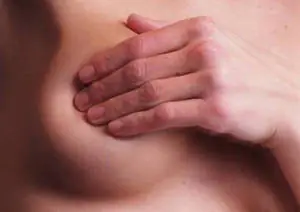
The skin of the breast is especially sensitive and delicate, so it is in this place that dryness, redness and itching most often occur in many women of different ages. If the skin on your nipples begins to peel and itch, you should not hesitate to see a doctor. The sooner a diagnostic examination of the mammary glands is carried out, the easier it will be to overcome the problem without consequences.
Causes of peeling
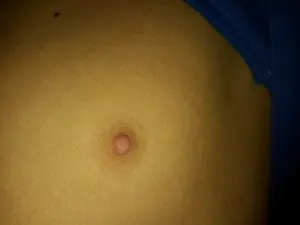
Dry skin on the nipples of the breast can appear not only due to simple reactions of the body to an irritating factor. If the skin on your mammary glands suddenly begins to peel, this may be a clear sign of the presence of dangerous diseases in the body. In this case, you must follow your doctor's advice. It must be remembered that it will be easier to overcome the disease than to treat its consequences afterward.
There are a large number of reasons why the skin on the nipples begins to peel. Dry skin in the area of the nipples and other parts of the body may appear due to a small amount of vitamins entering the body, allergic reactions, or serious diseases that require emergency treatment.
Women, due to their special physiological structure, more often suffer from pathologies in the chest area than men. To understand why peeling juices appeared on the skin, you need to consider the main factors that influenced the development of such a disease.
Physiological changes during pregnancy
Peeling nipples during pregnancy with the appearance characteristic cracks on the skin and pain due to a violation of the integrity of the skin. Dryness and peeling of the nipples when carrying a child can occur due to:
- reduced levels of vitamin A and vitamin B complex in the body;
- imbalances and hormonal changes;
- inflammation and irritation of the skin (this occurs due to the fact that a special juice, colostrum, is secreted from the nipple from time to time).
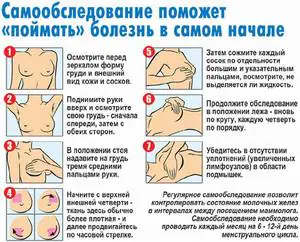
In most cases, such peeling on the chest occurs in a pregnant woman only in the third trimester. And although peeling is not a sign of the development of the disease, you need to consult your doctor and undergo a set of diagnostic procedures to prevent the appearance of cracks, which, in addition to pain, will also negatively affect the normal feeding of the newborn.
To get rid of cracks and dry skin, you need to lubricate your nipples with a special cream for stretch marks, which is used by almost all young mothers. It can also be used during feeding, but before giving the breast to the baby, you need to rinse it thoroughly. Additional symptoms of peeling:
- nipple color changes;
- general body temperature rises;
- characteristic swelling;
- symptoms of inflammation and redness of the skin;
- one-sided disease;
- the presence of additional secretions (in addition to colostrum);
- in some cases, in addition to peeling, there is increased sensitivity of the nipple.
Any of these symptoms is a serious reason to consult a gynecologist.
Feeding a baby with milk
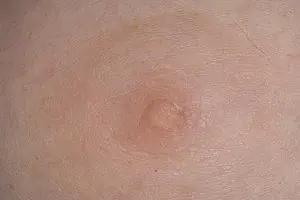
When feeding your baby with milk, you need to take special care of your breasts and note any characteristic problems with them. If the baby sucks the breast incorrectly, the skin near the nipples begins to crack and peel, especially often in the first days of feeding the baby.
To protect yourself from developing such a condition, you need to learn how to properly apply the baby to the mammary gland. When feeding, the baby must correctly grasp the entire pigmented part of the nipple areola into his mouth.
Development of dermatitis
If the nipples begin to itch very much and the skin on them peels off, then in most cases the cause is an allergic reaction. Allergy development factors:
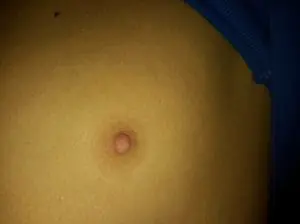
wearing synthetic underwear;- incorrectly selected personal hygiene products;
- poorly rinsed washing powder;
- eating foods to which a woman is allergic;
- contact with concentrated chemicals on the skin surface in the area of the nipples;
- internal and external use of medications, which ultimately lead to the development of persistent allergies;
- contact with certain plants (for example, in contact with nettles).
In this case, anything can become an allergen: cosmetic products, certain foods, medicines, household chemicals, as well as insect bites. But, if we talk about the chest area, then most often irritation appears due to wearing the wrong underwear or exposure to chemicals contained in the corresponding cosmetics used by a woman.
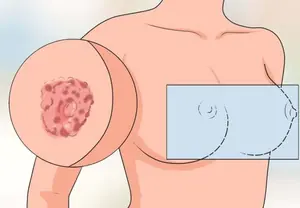
There is no need to use untested gels and creams from dubious manufacturers, and if irritation develops, you should immediately stop using them.
In this case, in order to cope with peeling and irritation, it is important to first eliminate contact with the main allergen. Most often, this is enough to relieve all symptoms. But if the nipples continue to itch, darken and flake, then it is very important to go to a dermatologist who will prescribe the application of special ointments with an antihistamine effect to the skin. In some cases, the patient needs to undergo general treatment.
Eczema lesion
Pathological processes have a chronic effect with periods of exacerbation and remission. When lesions develop in the nipple area, the rashes are characterized by clear contours and irregular shape. This disease is very difficult to treat. Reasons for the development of the lesion:
- occur after scabies;
- progression of the allergic process;
- getting injured while feeding a child;
- entering the body bacteria or fungi.
There are certain factors that influence the development of the lesion. These include:
- decreased protection of a woman’s immune system;
- hereditary factor;
- severe stress, depression and fatigue;
- defeat by chronic infections;
- disturbances in the functioning of the endocrine system.
The general clinical picture is described by a numerous and small rash of the papular type, after the development of which erosions appear on the skin. In this case, the nipples are very sore, flaky, and there is also a characteristic itching. The affected areas become bright red.
As a result of erosion, a thick, scaly crust appears on the nipples. Treatment with special medications is prescribed by a doctor in rare cases, since most often it is enough to simply get rid of the cause of the development of eczema. With such a lesion, a woman is obliged to observe strict rules of personal hygiene and select only natural underwear. During treatment of the pathology, breastfeeding should be suspended and examined for damage by microbes and fungi, which can then be treated with special ointments.
Progression of candidiasis
Candidiasis (also known as thrush), which occurs when exposed to yeast fungi from the genus Candida. A fungal disease can spread to the mucous membranes and skin of any part of the body. Most often, this phenomenon occurs with immunodeficiency caused by the following diseases: diabetes mellitus, HIV infection, as well as during a course of using corticosteroids or antibiotics.
Tumors in the mammary glands
The most dangerous factor in damage to the skin of the nipples, the development of dryness and peeling is considered to be the appearance of malignant and benign tumors.
In this case, in addition to the characteristic irritation on the surface of the skin, there are more dangerous and serious changes in the breast, including lumps, bumps and pain, enlarged lymph nodes in the armpits, retraction of a wrinkled nipple or strange fluid coming out of it.
The first symptoms of tumor damage:
- the appearance of irregularities on the chest and changes in its overall shape;
- characteristic lumps and tumors;
- swelling of the nipples, presence of discharge;
- the presence of redness and erosion;
- change in the color of the skin of the breast and its general condition.
How is diagnostics carried out?
Only an experienced doctor can understand exactly why peeling of the skin on the chest occurs. In addition to collecting anamnesis and examining the glands, you need to undergo a number of additional procedures. An accurate diagnosis of the lesion can be made using:
- general and biochemical blood test;
- studies of the amount of hormone in the patient’s blood;
- breast mammography;
- scraping the skin from the affected area and carefully examining it under a microscope.
Based on all the collected results of the patient’s medical diagnosis, the doctor can confirm the diagnosis and prescribe the correct and effective treatment for the disease in a particular case.
Prevention of gland diseases
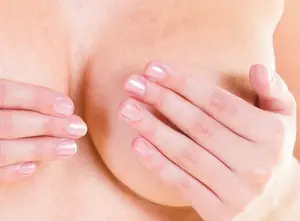
If the skin begins to peel off severely and peel around or near the nipples, then prevention and treatment will mainly depend on the factors that influenced the development of the disease.
A woman should closely monitor the health of the whole body, eat right, and consume only enriched vitamins and microelements products, exercise regularly and continue to keep your body in good condition, avoid all kinds of stress and overwork, find time for proper sleep and rest.
If we talk about the condition of the breast, then you need to follow some recommendations from your attending physicians:
- closely monitor the level of hormones in the body;
- if necessary, you need to increase the level of minerals and nutrients in the foods you consume;
- independently monitor the condition of your breasts and undergo regular examinations;
- during pregnancy, you need to wear a special breast-supporting bra;
- apply only tested cosmetic products to this area;
- when feeding a newborn with milk, you need to learn how to apply it to the breast correctly;
- eliminate the use of various food additives and medications or at least minimize it;
- go for an examination with a gynecologist every year;
- Rinse the laundry thoroughly after washing with special chemicals;
- choose only high-quality cotton underwear that will not cause irritation to the skin.
Sensitive skin in the chest area needs proper and careful care, especially as you age. You should try your best to avoid negative effects on the breasts and carefully monitor their condition.
You need to pay attention to your body and respond to even the slightest changes in it. Even such a minor problem as dry skin on the nipple can result in a manifestation of a dangerous disease.
Treatment of breast lesions
The moment a woman notices irritation in the mammary glands, she should immediately go to see her doctor. Only a specialist in this case can understand the cause and begin proper treatment of the pathology. In this case, it is not recommended to use folk remedies, as this can only negatively affect the patient’s condition.
The only thing that can be done in this case, with the permission of a physician, is to lubricate the nipples special chamomile decoction, if at the same time the woman is carrying a child or breastfeeding. All other treatment methods and drugs are strictly prohibited. There is no need to try to use scrubs: it is simply impossible to eliminate damage to the skin with such means; in addition, they can only provoke greater irritation.
Only a timely visit to the doctor can improve the condition. First, you should make an appointment with a gynecologist, he will conduct an initial examination and, if necessary, send you for a consultation with a dermatologist or mammologist.

Author of the article: pediatrician Valentina Razheva
The content of the article
Peeling skin during pregnancy is a fairly common problem that affects at least every third woman expecting the birth of a baby. Usually, expectant mothers begin to peel off the skin on their arms, legs, and face. And on more delicate areas: stomach, chest and nipples.
It’s worth noting right away that in most cases there is nothing wrong with flaking skin during pregnancy. Therefore, if peeling is not accompanied by any other symptoms, there should be no cause for concern.
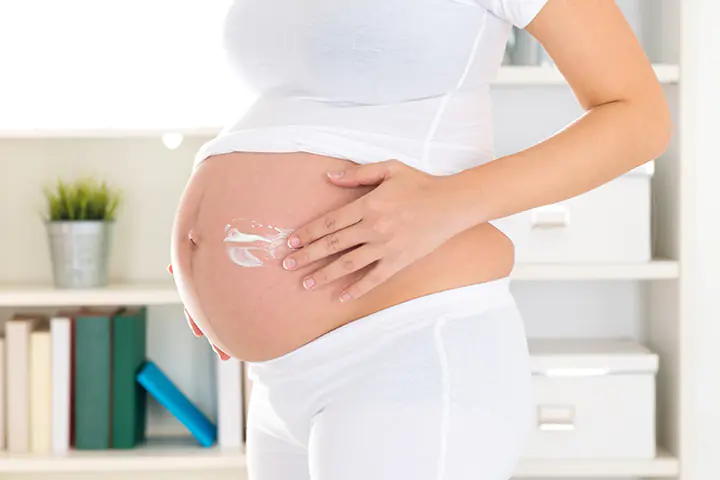
Peeling skin during pregnancy: what to do?
Peeling skin during pregnancy: reasons
During a wonderful time of pregnancy for every woman, the expectant mother undergoes a serious restructuring of her body. It adapts as much as possible to the needs of the growing baby, and in the last trimester prepares for childbirth. A pregnant woman experiences external and internal changes.
And pregnancy also means, one way or another, stress, poor health, and fatigue. And all these factors affect the condition of the skin not in the best way.
Why does skin peel during pregnancy?
- Natural need for water
Expectant mothers need to take into account that the volume of liquid consumed now goes not only to her needs, but also to the needs of the baby. From the second trimester, amniotic fluid will begin to form, and the lack of water in the body can become noticeable and manifest itself, among other things, as the problem of flaky skin.
When a pregnant woman’s figure begins to change, her breasts enlarge, her hips expand, her belly with the baby inside grows, and her skin stretches. This process may be accompanied by itching and flaking of the skin of the abdomen. During pregnancy, breasts often peel off due to secretions and colostrum released from the nipples.
Lack of vitamins and microelements
The expectant mother should carefully monitor her diet and eat enough nutrients for the health of her unborn child. Vitamin deficiency, especially a lack of vitamins A, E, B, leads to dryness of the epidermis and is manifested by peeling of the skin of the face, hands and feet during pregnancy.
It's normal to feel anxious during pregnancy. But not in the case when stress is accompanied not only by psychological discomfort, but also by physical manifestations. When stressed during pregnancy, the skin on the arms and legs peels and severe itching occurs.
Insufficient hygiene, especially if pregnancy occurs in a hot climate and during the warm season, leads to skin irritation, dryness, and flaking.
Hormonal changes
As a result of changes in hormonal levels, the secretion of sebum, which is necessary for sufficient hydration of the skin, is disrupted. If the epidermis is excessively dry, peeling of the skin may begin.
Sometimes unwanted hormonal changes occur against the background of disturbances in the functioning of internal organs and systems. Pregnant women may experience abnormalities in the functioning of the endocrine system, which lead to a decrease in estrogen levels (this hormone, among other things, is responsible for the good condition of the skin). With hypothyroidism, the thyroid gland begins to produce less hormones, which is also reflected in the form of peeling and itching of the skin. Lack of prolactin (the hormone plays an important role during lactation) is manifested by increased sweating, which often causes itching and peeling of the skin of the abdomen and body during pregnancy. Also, a large group of causes of skin peeling are specific dermatoses of pregnant women, manifested by itching, rashes, dryness and flaking of the skin.
Peeling nipples during pregnancy
Already in the first weeks, many pregnant women notice changes in their breasts. She becomes too sensitive, the mammary glands become enlarged, and discharge from the nipples appears. And at the same time, the nipples can itch and peel. This is not a pathology, but one of the most common conditions found in pregnant women.
What causes peeling of the breasts and nipples?
- With nipple discharge
Even during pregnancy, the body begins to prepare for the birth of a child and the upcoming feeding. Small white bubbles appear on the nipple halo, secreting secretions. It lubricates the nipple to protect against dryness.
Excessive secretion and insufficient hygiene lead to irritation of the breast skin, itching, and peeling.
In the last trimester, colostrum begins to be released from the mammary glands (this is especially true for women who have previously given birth and have developed thoracic ducts). The liquid dries on the breasts, resulting in a feeling of tight skin, itching, and peeling in the nipple area.
With an allergic reaction
Increased skin sensitivity during pregnancy can cause allergic reactions to clothing, especially synthetic ones. On the chest, an allergy will manifest itself as itching, irritation, dryness and flaking. The same reaction can be caused by a hygiene product: shower gel or body cream.
With increasing breast size
During pregnancy, the mammary glands enlarge and in the last trimester they are filled with milk for future feeding. With breast enlargement, the skin stretches quickly and unevenly, which causes itching, dryness and flaking.
What to do if your nipples peel during pregnancy?
To eliminate unpleasant sensations, careful hygiene and care is enough. Breasts and nipples should be washed regularly with warm water (can be wiped with a damp towel) and wiped dry.
To prevent allergies, it is better to choose cotton underwear and change your bra size in a timely manner.
Lubricate the skin around the nipples with a hypoallergenic remedy for dry skin. La-Cri MAMA emulsion is perfect for these purposes. It not only moisturizes and softens the skin, but also effectively fights the formation of stretch marks that can appear on the breasts as a result of breast enlargement.
If peeling nipples during pregnancy are very disturbing, does not go away even with proper care, or is accompanied by other symptoms: chest pain, change in skin color, increased body temperature, purulent or bloody discharge from the nipples, general malaise - this is a reason to urgently consult a doctor.
Experts' opinion
An important component of the emulsion is licorice extract, the anti-inflammatory activity of which has been clinically proven as part of a study of the biological activity of aqueous extracts of chamomile flowers, raspberries, licorice rhizomes and their combinations at the Bashkir State University.[1]
A clinical study of La-Cri products proves their high effectiveness, safety and tolerability for daily skin care of adults and children. The products are recommended by the Union of Pediatricians of Russia and are safe for the delicate skin of the expectant mother.
Consumer Reviews
Nikandra777 (irecommend.ru)
“The emulsion is designed to combat stretch marks, when I read about the effect of this cream, it was stated that it also has an anti-allergic, moisturizing and antipruritic effect, I realized it can be useful not only for stretch marks, but also for my big problem, this redness on the face.
There is quite a lot of cream in Sasha, so I was able to understand the effect; this was enough for me to use Sasha four times. I applied it to my face once a day in the evening, and to one stretch mark on my body. Consistency: pleasant, delicate, completely non-sticky and does not cause discomfort.
The color of the cream is white.
Smell: very pleasant, gentle, non-intrusive smell, it’s rare for me to like the smell. Maybe this is because this cream does not contain dyes or fragrances.
Ingredients: also good quality, there are a lot of oils in the composition, but the cream does not clog pores, I say right away. Price for full size: 280 rubles.
The result and my opinion: I really liked this cream, I didn’t see any effect on stretch marks, I think this is a cream for preventing stretch marks, for example, when you are actively losing weight or just keeping your body in good shape. And on the face the effect is amazing. The cream does not cause redness, does not sting, and perfectly moisturizes the skin. Makes her look healthier and more well-groomed. I liked the result, I would buy this cream again for use on the whole body and face, for dryness, redness and for elasticity. I like this company, it makes quality products, this is not the first time I understand this.”
Aninasy (irecommend.ru)
“I didn’t start using this product in the first months of pregnancy, which I regret not because stretch marks appeared, but because I used an expensive product when I had a good budget analogue under my nose. Everyone knows the problems of pregnancy - red stretch marks, and to avoid them, or at least not to increase them, you need to use specialized cosmetics. The product is produced in Russia, in St. Petersburg, the packaging is entirely in Russian, which is good news. The emulsion has a pleasant and unobtrusive smell; from a distance it reminds me of a sweet tangerine. It itself is opaque white in color and, thanks to its moderate-liquid consistency (very similar to lotion than milk), is quickly absorbed. I need 2-3 pumps at a time to completely cover my stomach. About the same amount for the thigh area, I just pay more attention to the tummy. The packaging doesn’t say anything about the chest area, there are no contraindications or indications, so sometimes I apply it too. There were no rashes. I use it daily: morning and evening, on clean skin after a shower, with massaging movements, it takes about one minute. The composition contains natural ingredients: various oils, the benefits of which I think everyone, in principle, knows...
I think that the composition is more than harmless, since all dyes and fragrances are contraindicated for pregnant women. This product did not cause irritation or any allergies for me; on the contrary, when I scratched my stomach (for example, if my clothes were itchy or it was simply itching incredibly as it grew), and then applied this emulsion, the skin calmed down and the red stripes quickly disappeared until next application. After use, the skin is well hydrated, velvety, smooth and soft to the touch. In the last month, you want to scratch your belly almost constantly, because the baby is actively growing and sometimes the skin simply “can’t keep up” with it. This is the only product that saves me, it soothes my skin. I like that after use there is no sticky layer or film left, and also if the product is applied in a hurry and does not have time to be absorbed, then there are no greasy marks left on the clothes, or rather, there are no traces or smell left at all. I would like to note the convenience of using a bottle with a pump: the product can be used until the very last drop, no excess air gets into it, therefore the product retains all its beneficial properties longer and does not oxidize. And this is very important, because I still wouldn’t say that it is too cheap. Microbes that can be introduced by reaching into the container with your fingers are also kept out. For me, when choosing creams, this is a key point. I bought it at the pharmacy for 430 rubles, I think this is the average price in this segment of goods. However, thanks to its economical use, I have been using it for 3 months now, and I still have half of the bottle left, which can be used after childbirth, since the product is also suitable for nursing mothers. If you wish, you can leave it altogether, since the shelf life is two years. It should be remembered that the product is only for adults, although it is not allergenic. The design of the bottle is ordinary; the manufacturer adheres to minimalism in the color scheme: white, light green and blue. All of them are not irritating to the eyes. The bottle is tall, making it inconvenient to carry in your purse if you need to go somewhere and have to pour it into a small container. This is easy to do, because by removing the green cap, you can easily unscrew the pump and pour the required amount.”
__________________________________________
Face peeling during pregnancy
In addition to the above reasons, facial peeling during pregnancy can be caused by your skin type. Those with oily and problematic skin will notice an improvement in the condition of their facial skin, but dry and sensitive skin will cause its owner more problems - from the usual feeling of skin tightness to the formation of flaky spots on the face during pregnancy.
For increased dryness and itching, an extra moisturizing cream based on natural ingredients is suitable.
Peeling of hands during pregnancy
Dry skin occurs on the hands more often than on other parts of the body. This is due to the fact that hands are exposed to constant external influences and are often not protected from the sun and chemicals. The situation worsens during pregnancy, and the skin begins to peel off on the hands and fingers even more actively, up to the formation of cracks and wounds.
Dry hand skin requires a special product, for example, La Cree cream for dry skin, which perfectly softens and nourishes the skin, protecting it from peeling and drying out. And if your hands are already chapped, the cream will have an anti-itching effect, relieve redness and peeling.
Peeling skin during pregnancy: what to do
- Cleanse skin thoroughly. This is especially true for the breasts and nipples, where secretions are constantly released.
- Drink enough fluids.
- Use special products for dryness and stretch marks, which contain a minimum of chemicals.
- Eat right, take vitamins.
- Wear clothes made from natural fabrics.
It should be understood that if peeling is caused by any abnormalities in the body, eliminating only external manifestations will not be effective. If such disorders are diagnosed by a gynecologist after a regular examination, he will refer the pregnant woman to specialized specialists.



